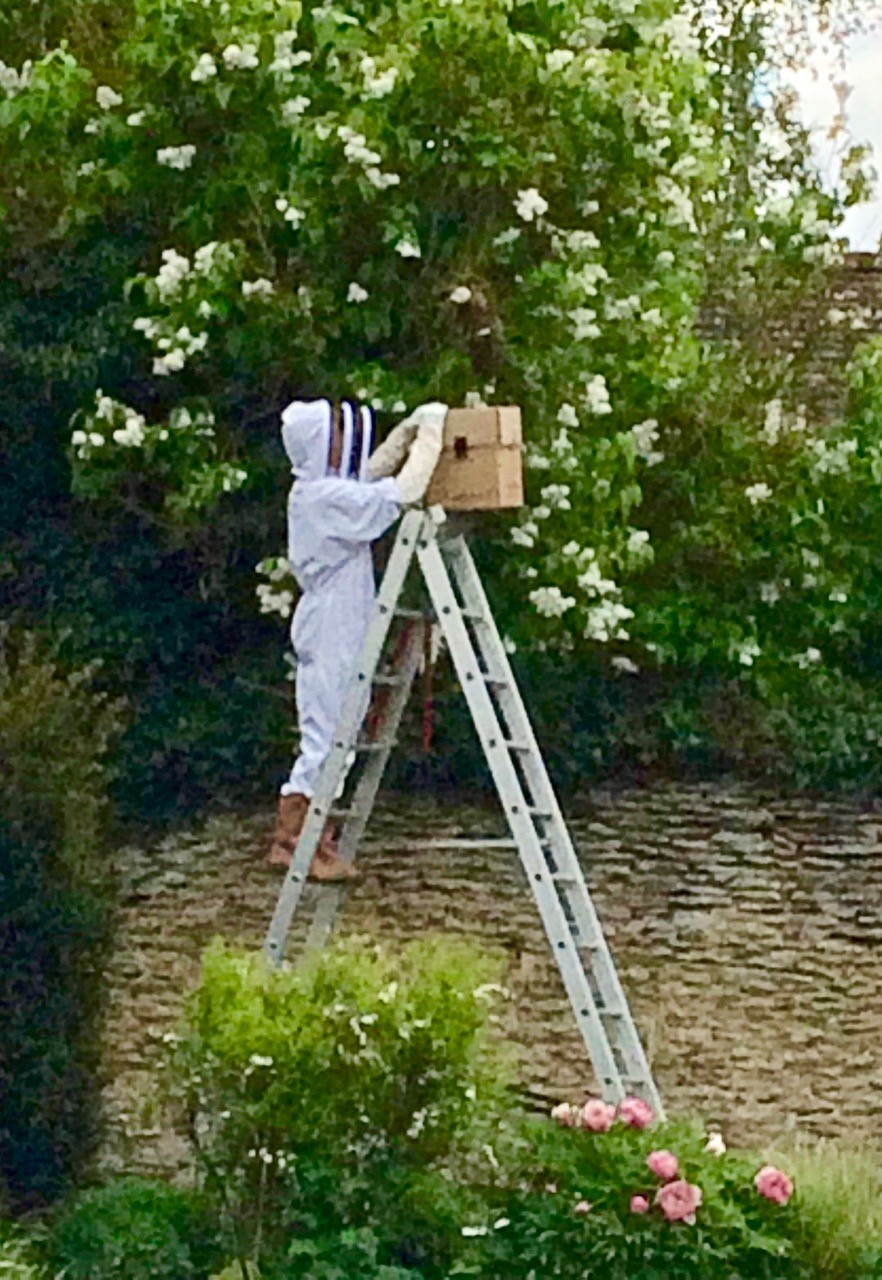Bee Blog November 2018
I am Gerald Bushby (pronounced bush bee!) a beekeeper in Weston on the Green, a small village in Oxfordshire. I am going to be writing a monthly blog about the bees in my apiary. I hope you will find it interesting. I should start by saying that I am not an expert, having only kept bees for three years. Anything I say is my own personal opinion; I accept that there may often be other views and opinions.
I finished last months blog referring to bees tendency to swarm, something I have touched on before but not looked at in detail.
Swarming is the natural means by which a new honeybee colony is created. Before the advent of movable frames swarming bees were a welcome and valuable part of beekeeping. When any colony grows above a certain size, or more importantly, density, the bees are likely to start the process of swarming. Half the contents of the bees in the hive will leave with the existing queen and try to find a new home elsewhere.
The first sign that bees are considering swarming is that they will start to form new queen cells so as to be able to produce a new queen for the bees that are left behind. Shortly before the new queen hatches the old queen and a large number of bees, workers and drones, will leave the hive to make a home elsewhere. The process of swarming is very exciting to watch. It is also very noisy somewhat like a train running on a track. Bees will start to cluster around the entrance of the hive and then, suddenly, they will explode out like a water spray from a hose pipe. It is very dramatic and somewhat unsettling on first viewing. The cloud of bees will fly to where the new nest is to be formed or may gather in a resting mass hanging from a branch of a tree or a fence post.
A few days before the swarm leaves the hive, scout bees will seek out potential new nest sites. When the swarm occurs the scout bees will lead the swarm to their new home. Other worker bees will release a special scent called the nasonov pheromone from glands at the tip of their abdomen. This scent will guide the flying bees where to fly to. On arrival at a new nest site, the workers immediately set about making new honeycomb. They are able to do this because, before they leave the hive they gorge themselves on honey taking on up to 40% of their body weight. For this reason whilst the sight of a swarm may be concerning in fact they are usually quite docile and unlikely to sting being rather bloated after their large meal. Within a few days new usable comb is created and a new nest is established.
There is a school of thought amongst some beekeepers that bees should be left to swarm as it is a natural process and part of the way they have developed over thousands of years. These days however with an increasingly urban form of development throughout the country there are fewer and fewer suitable places where bees can form new nests. The general public becomes disturbed and distressed and with the current fashion for more and more urban beekeeping, swarms of bees in small gardens, on cars and bicycles does form a conflict situation. Each county association of beekeepers has a swarms officer who if contacted will send a beekeeper to collect swarms to be rehoused in an alternative home.
Beekeepers are generally called to swarms that are clustering. If the bees have moved into a cavity or wall to form their new home they are almost impossible to remove without dismantling the construction. Collecting a swarm can be quite exciting, cutting a hanging swarm from a tree and catching it in a box looks very impressive. If the queen is located in the box it is even more impressive to set the box down and see all the workers walking into the box to be with their queen. Swarms can often be found in inaccessible places high up a tree or they can decide to move on before a beekeeper has reached the site to collect them.
As I have mentioned before swarms usually occur in spring when nectar is readily available and the bees have a long time to build up their new colony so as to survive through the following winter.
My photograph this month shows me up a step ladder collecting a swarm. They were in a good accessible position easily collected in a box and successfully rehoused in a new hive elsewhere.
I am a proud supporter of the ‘Bees for development’ charity, my love of the bee drew me to this wonderful UK based charity and the great work they do around the world with Bees and the impact they can have on people’s lives. Please help me support this wonderful organisation, as 2BScientific will be doing with donations to this hard-working charity.
